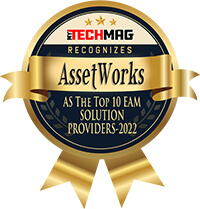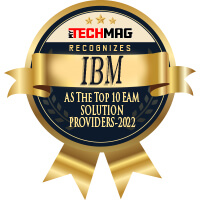Technology has overhauled the way business is done. In recent times, several innovations have emerged in the field of organizational technology that leverages modern tools, such as Artificial Intelligence, Big data, the Internet of Things, cloud computing, and others. One technology that is helping businesses get the most from their physical assets across the entire asset lifecycle is – Enterprise Asset Management. It helps organizations manage, monitor, and report on the state of all their critical assets so they can save costs and solve all their problems proactively. There are several other benefits of using this technology. This article explores those benefits in detail.
What does Enterprise Asset Management entail?
Asset-rich enterprises leverage Enterprise Asset Management (EAM) solutions to manage their assets and general management purposes. Powered by state-of-the-art technology, EAM solutions let enterprises monitor assets continuously and have a holistic view of their assets across all departments, business units, and locations.
What type of assets does it manage?
Enterprise Asset Management solutions allow enterprises to have a comprehensive view of a variety of physical assets. Below are some of the most regular types:
- Manufacturing assets, for example – conveyor systems and industrial ovens
- Fleet assets such as trucks.
- Construction assets such as tools, cranes, etc.
- Facilities assets such as security systems.
EAM software systems come with an array of benefits, which we will discuss in the next section.
Six key benefits of using EAM
Eliminates Spreadsheets
Business Assets increase over time. Organizations must maintain records for all the assets. Some examples include – Keeping track of start and end date, monthly payment, lease terms, useful life, etc.
Maintaining records of a large number of assets on spreadsheets can be nightmarish for businesses. Thankfully, with the help of the right Enterprise Asset Management solution, enterprises can track important details about each asset in real-time and prioritize essential tasks for easier management.
For example, if you have two printers requiring service but only have the budget for one of them this month. How would you know which one to prioritize? An asset management software can help you quickly look up the service history for each so you can decide which one needs service first.
Also, it allows enterprise workers to quickly find any asset using different criteria, including:
-
- Asset Type
- Location
- Warranty Date
- Purchase Date
- And others
Predictive maintenance prevents possible failures and save costs
By leveraging advanced IoT sensors and insights obtained from real-time data analysis, EAM systems allow companies to prevent equipment and machinery failure. EAM systems can determine when a piece of equipment will break down with their advanced predictive maintenance capabilities. This enables workers to perform corrective actions proactively.
For example, if a piece of machinery runs out of machine oil and goes unnoticed, it may break down and stop working – which will be a significant expense.
Advanced EAMs can track all pieces of machinery within an organization and predict when they would need maintenance. With the help of real-time information obtained by data analysis, workers can expect potential asset problems before they even happen. That way, they can prioritize maintenance activities, giving companies a better way to handle the maintenance of their assets and increase operational efficiencies.
Helps Understand the quality of equipment
With the help of EAM systems, companies can store and track information about their asset vendors, giving them a better view of how much money they’re spending externally.
With the help of EAM systems, companies may know which assets are continually malfunctioning. With this knowledge, they can decide whether to keep buying from the same vendors or look for new ones.
Helps to ensure regulatory compliance
Businesses are required to manage assets as per the standard of the business-specific sector.
But due to the growing need for organizational transparency and increasing regulatory laws, it’s becoming difficult for companies to keep track of the relevant laws and regulations. A sound EAM system can help companies address regulatory and compliance challenges and increase efficiency.
Helps Identify Trends
With the help of a computerized EAM, companies can learn a lot more about their assets and quickly identify trends in an asset’s lifecycle. With this knowledge, they can schedule maintenance and repairs more efficiently and save a lot of money on costly repairs.
Eliminates Ghost Assets
Some assets may be inaccurately recorded or lost, or stolen but are still in the records. An Enterprise Asset Management system allows real-time tracking to identify and eliminate the ‘ghost’ assets.
Conclusion:
Asset management, if done correctly, can increase productivity and savings within an organization. Having the proper Enterprise Asset Management in place will give you the ability to review the performance of your assets and ensure their optimal health to get the maximum benefits out of them.








